Key takeaways
- Band rehearsals are about collaboration, chemistry, and problem-solving to create a cohesive sound.
- JamKazam enables remote jamming by reducing audio lag, facilitating real-time collaboration.
- Effective setup involves proper audio configuration and scheduling to enhance the rehearsal experience.
- Managing audio quality and fostering a supportive environment are crucial for successful and enjoyable rehearsals.
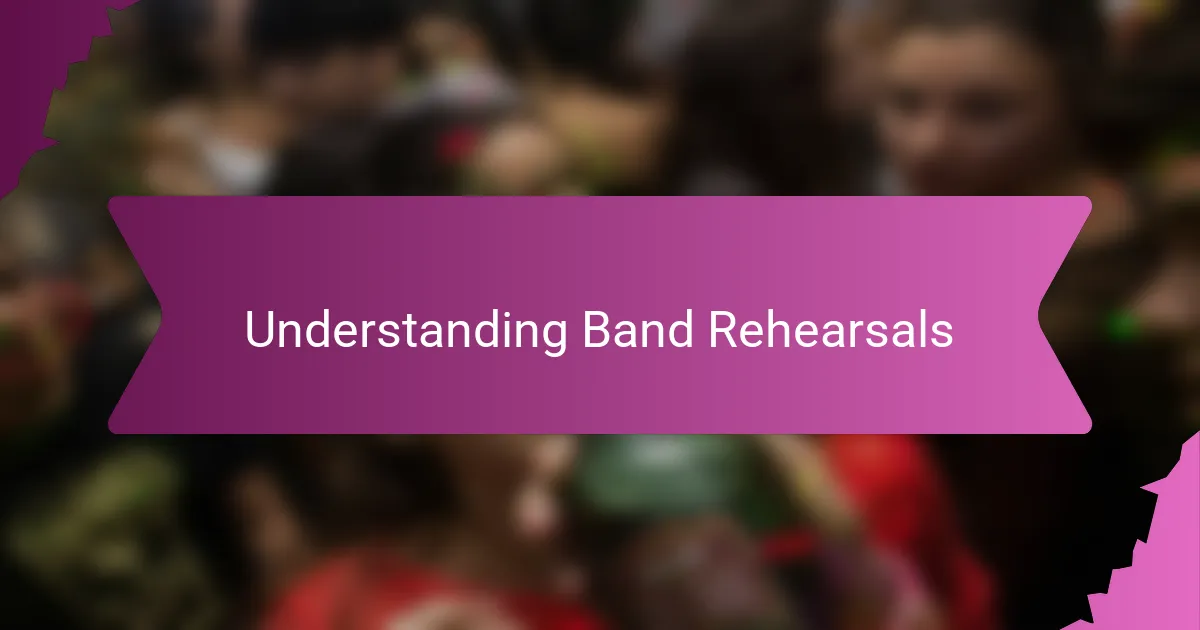
Understanding Band Rehearsals
Band rehearsals are more than just practice sessions; they’re where a group’s unique sound and chemistry truly come alive. I’ve always found that the magic happens not just in playing notes perfectly but in listening to each other and responding in real time. Have you ever noticed how the energy of a rehearsal shifts when everyone is genuinely in sync?
To me, band rehearsals are also about solving puzzles together—figuring out how to blend different instruments, styles, and personalities into a cohesive performance. It’s not always smooth sailing. Sometimes frustrations pop up, but those moments often lead to breakthroughs that push the music forward.
There’s something deeply satisfying about seeing a song evolve during rehearsal, layer by layer. When I think back to my own experiences, the best rehearsals felt less like work and more like a shared creative adventure. Isn’t that what making music is really about?
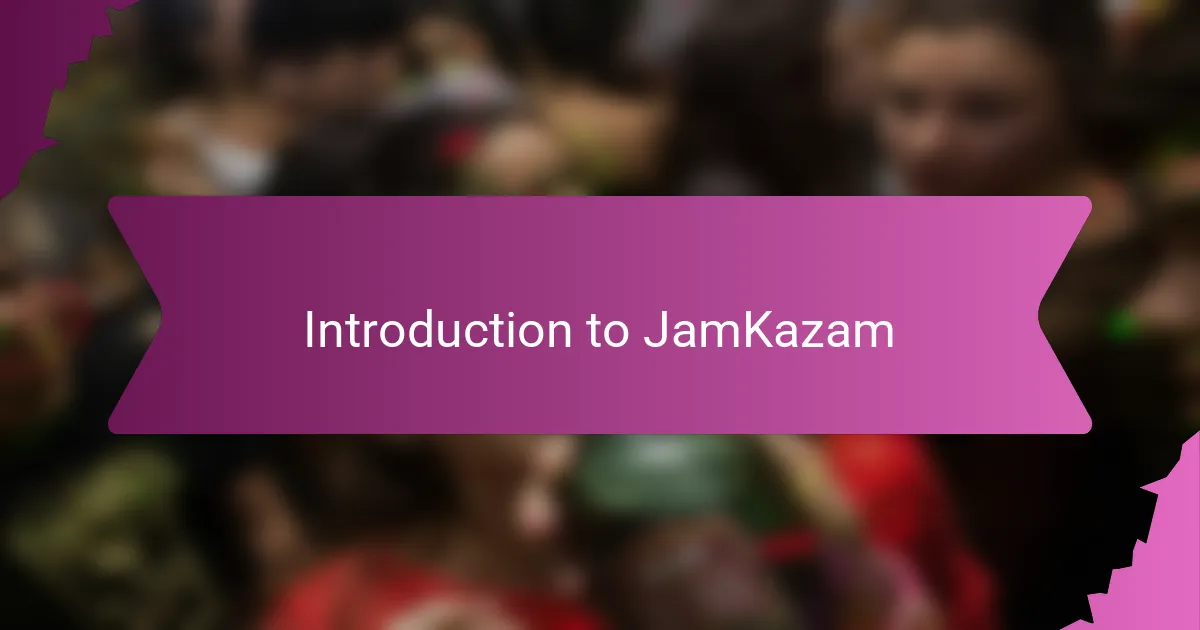
Introduction to JamKazam
JamKazam caught my attention as a game-changer for musicians who want to play together without being in the same room. It’s a platform designed to minimize audio lag and keep everyone’s timing tight, which, let me tell you, is a huge deal when you’re jamming remotely. Have you ever tried to play along with someone over a regular video call? The delay can kill the groove completely.
What really struck me about JamKazam is how it creates a virtual space where band members can connect, rehearse, and even perform live with surprisingly smooth synchronization. From my own experience, it felt like a bridge that helped us overcome distance without losing the spontaneity and interaction that make rehearsals exciting. Isn’t it amazing when technology actually brings people closer instead of pushing them apart?
I remember the first time I logged in and set up a session—it was a little intimidating at first, but the interface is pretty user-friendly once you get the hang of it. Watching everyone’s audio streams align in real time made me realize how far we’ve come in making remote music collaboration not just possible, but genuinely enjoyable. Does it replace being in the same room? Not quite, but it’s a brilliant second-best, especially when circumstances keep us apart.
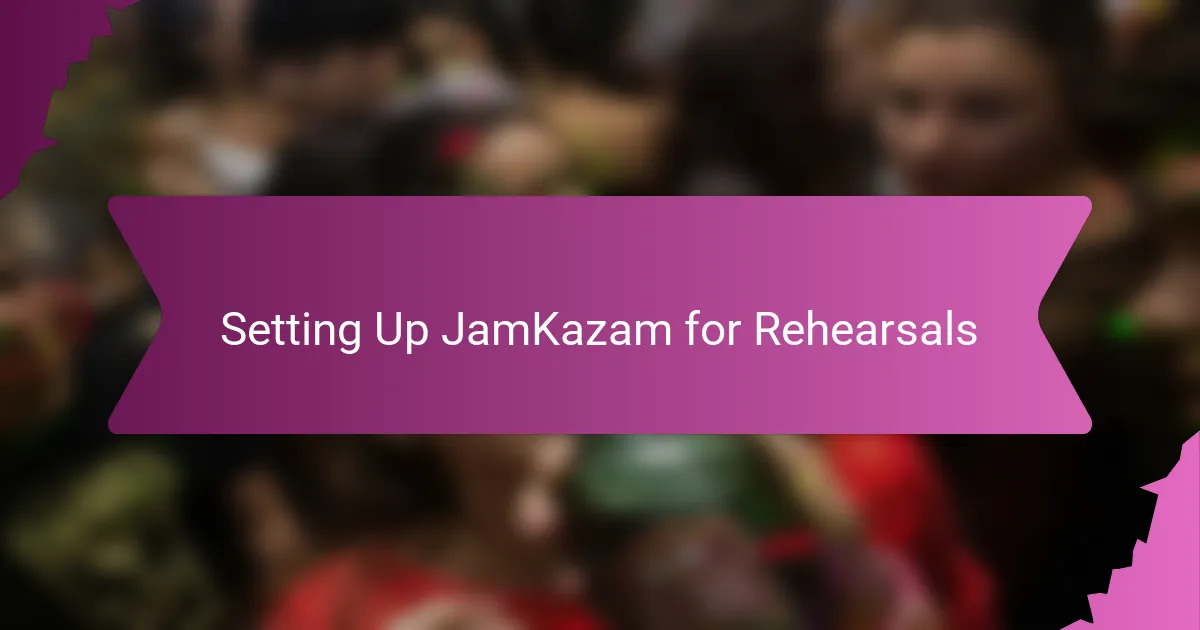
Setting Up JamKazam for Rehearsals
Getting JamKazam ready for a rehearsal took me through a surprisingly smooth setup process. I started by making sure everyone downloaded the app and created profiles—this felt like laying down the first brick of a new creative foundation. Have you ever felt the relief when a tech hurdle turns out easier than expected? That was exactly my moment.
Next, we configured our audio devices inside JamKazam, which was crucial to reduce lag and echo. It reminded me how important the small technical details are; without them, the magic of real-time jamming just melts away. I asked each member to test their sound right before the session—this little step saved us from scrambling later.
Finally, setting up a “Jam Room” felt like opening the doors to our virtual studio. Watching everyone connect, seeing their names pop up, created this unexpected sense of togetherness. Doesn’t it feel a bit like waiting for the band to show up at the practice space? That virtual anticipation somehow made the first chord even sweeter.

Scheduling Your Band Session
Finding the right time that fits everyone’s schedule was surprisingly the trickiest part for me. We’re all juggling different commitments, so I learned to be flexible and set up a poll through JamKazam’s scheduling tool. Have you ever tried coordinating a dozen calendars? It’s a puzzle, but this feature made it way less painful.
I also realized that sending reminders a day before the session helped keep everyone on the same page. I enjoy seeing how a simple nudge boosts excitement and commitment—there’s something about knowing the “jam clock” is ticking that gets the creative juices flowing. Does this sound familiar to you, too?
What helped me the most was setting a clear start time but leaving a buffer for tuning and troubleshooting. Those extra minutes took the pressure off and let us settle in comfortably. In my experience, that little breathing room makes the whole rehearsal feel more relaxed and focused from the get-go.
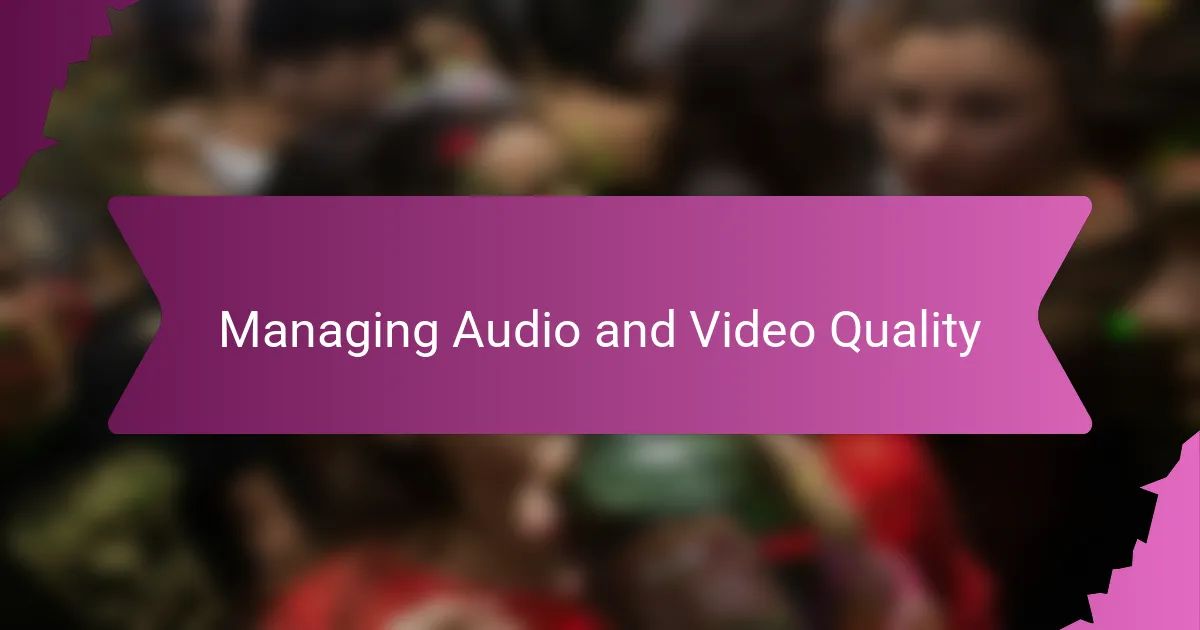
Managing Audio and Video Quality
Balancing audio and video quality felt like walking a tightrope at first. I quickly learned that using wired headphones and a good microphone made a noticeable difference—suddenly, the sound became clearer, and latency dropped. Have you ever noticed how a crackling mic or choppy video can totally shatter the vibe? It’s amazing how these small upgrades transform the whole experience.
One practical trick I found was adjusting JamKazam’s audio settings before we started playing. Tweaking buffer sizes helped us strike a balance between delay and sound clarity. Sometimes, I’d ask bandmates to mute video if their connection wasn’t strong, prioritizing sound over picture. Doesn’t it feel better to have rock-solid audio, even if the video is a bit pixelated? That’s what kept our groove intact.
Watching my screen and listening carefully, I also reminded everyone to close other apps eating bandwidth during rehearsals. It might sound like an obvious tip, but trust me, freeing up internet speed had an immediate impact. It made me realize how managing digital distractions is just as crucial as tuning instruments before a session. Do you find yourself battling background noise or freezing video? These little changes really helped us stay connected musically.
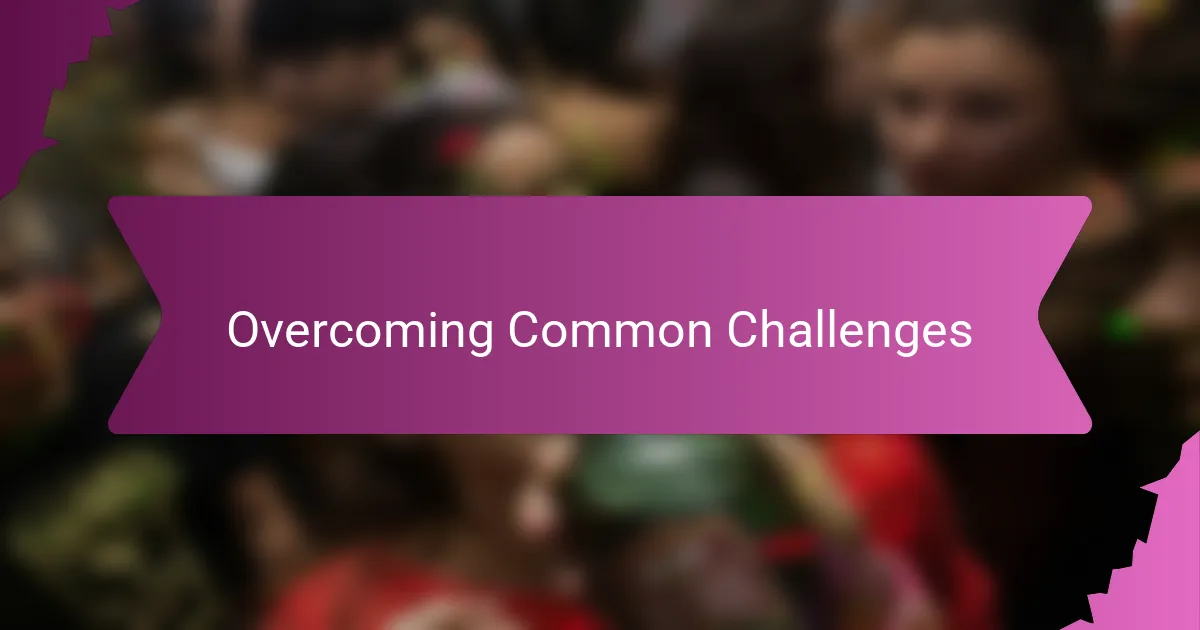
Overcoming Common Challenges
Dealing with latency was one of the biggest hurdles at first. I remember the frustration when our timing felt off and the groove disappeared—it was like trying to dance out of sync. But by patiently adjusting buffer settings and encouraging everyone to use wired connections, we managed to pull everything back into alignment. Have you ever felt that relief when a tech fix suddenly makes the music flow again? That moment was pure gold for me.
Another challenge was getting everyone comfortable with the tech side of things. Some bandmates were a bit hesitant, worried about the setup or worried they’d sound weird online. I found that taking the time to walk through the basics together helped ease those nerves. Isn’t it interesting how a little hand-holding can turn anxiety into excitement? Creating that supportive vibe made our rehearsals feel less like a remote test and more like a genuine collaboration.
Then there’s the unpredictable beast of internet connection issues. I won’t lie, there were times when lag spikes or dropouts threatened to derail the session. Instead of letting frustration build, I encouraged open communication and quick pauses to troubleshoot. Have you noticed how a simple “hang on, let me fix this” keeps the mood positive and the band focused? Embracing those small interruptions as part of the process ultimately made our rehearsals smoother and more enjoyable.
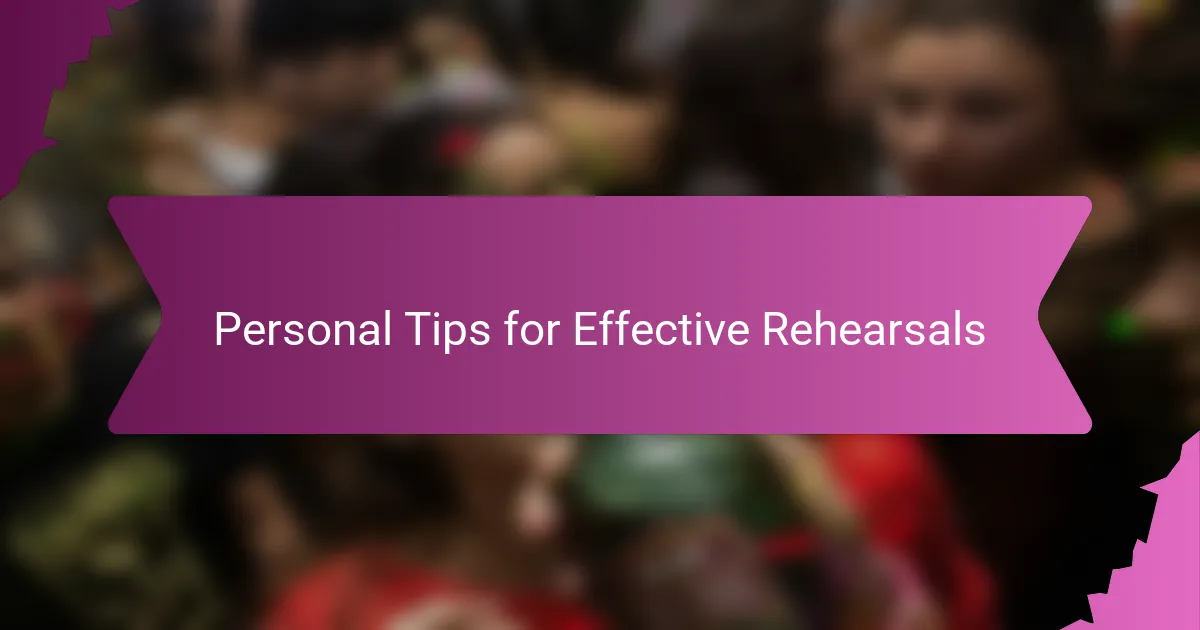
Personal Tips for Effective Rehearsals
I’ve found that starting each rehearsal with a quick check-in, not just on sound but on how everyone’s feeling, really sets a positive tone. When you acknowledge that we’re all bringing more than just instruments to the session, it creates a space where creativity can flow more freely. Have you ever noticed how a calm, connected group just plays better together?
From my experience, keeping rehearsals focused but flexible works wonders. I try to break down the session into clear goals, like nailing a tricky section or experimenting with ideas, but I also leave room for spontaneous moments. Isn’t it refreshing when a relaxed approach somehow leads to breakthroughs you didn’t anticipate?
One game-changer for me has been encouraging everyone to mute microphones when not playing. It sounds simple, but this small habit cuts down distractions and keeps the mix clean. Plus, it makes getting back in easier, because you’re not stepping over background noise. Have you tried this? It really helps maintain that professional vibe, even in a casual online setup.